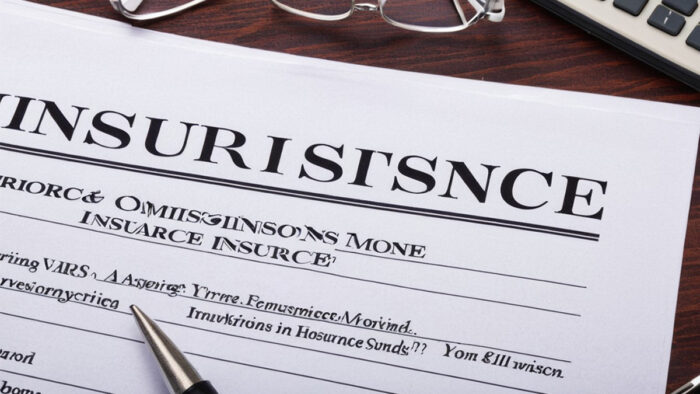Not only do regular citizens need insurance, but professionals who render services too. Moreover, they experience claims from their clients against various things. This is why errors and omissions insurance is important. So, with this professional liability insurance, they are safeguarded against these claims. But what type of insurance policy is it? For better understanding, explore the next section carefully.

What is Errors and Omissions Insurance?
Errors and omissions insurance is a type of personal liability insurance that offers coverage against inadequate work and claims of neglect. In other words, when you have this type of policy, professionals are protected against claims made by clients.
These professionals can be lawyers, consultants, insurance agents, and financial advisors. In addition to this, errors and omissions insurance is a good business insurance that will safeguard any employee accused of making a mistake in the company.
How Does It Work?
Errors and omissions insurance is also known as E&O insurance, and certain professionals, like real estate agents, attorneys, contractors, and medical professionals, need it. However, if you want to get a quote, the requirements differ by profession and state. However, if you do not have this type of insurance in a business and you are involved in a lawsuit, you are going to face huge financial difficulty paying for the expenses out of your pocket.
To sum up, individuals and business organizations that offer professional services need this type of insurance. So, if a claim is made and results in a lawsuit, you do not have to worry about the claim settlements. Besides, E&O insurance normally provides court-cost coverage, which is usually very high.
What Does Errors and Omissions Insurance Cover?
As mentioned earlier, errors and omissions insurance is a good thing to have in an organization. Moreover, not only do the professionals working in the company benefit, but so does the company itself. However, remember that the coverage options depend on the insurance company and policy as well. So, here are the errors and omissions insurance protects you against:
- Professional negligence.
- Breach of contract.
- Errors and mistakes during work.
- Inability to provide a particular care standard.
- Failure to meet a deadline or deliver a particular service to a customer within the agreed-upon period.
As for expenses, errors, and omissions, insurance usually covers the legal fees of an attorney, whether the company is guilty or not. This means that if you find yourself in court, your policy may cover the court fee and legal costs.
What Does It Not Cover?
If you have an E&O policy and you are not sure what you will not be receiving coverage for, this section will help you. Here are the basic situations that your errors and omissions insurance will not cover:
- Bodily injury
- Employment practices
- Personally identifiable information
- Trade and patent secrets
- Property damage
- Work-related injuries and illnesses
But if you are looking for a policy that offers work-related illnesses and injuries coverage, check out workers’ compensation insurance.
Who Needs E&O Insurance?
This type of policy is not for everyone. In other words, it is only accessible to certain professions. So, if you are doing any of the following, you should consider getting an E&O insurance quote:
- Graphic designers
- Travel agents
- Tax preparers
- Accountants
- Real estate agents
- Technology professionals
- Interior decorators
- Advertising companies
- Engineers
- Medical professionals
- Management and business consultants
- Lawyers
Trust me, you will not regret considering this coverage for your business.
How Much Does Errors and Omissions Insurance Cost?
On average, the cost of purchasing an errors and omissions insurance quote is $61 per month and $735 per year. However, do not think that this is the fixed price because there are tons of factors that affect the cost. They include:
- Business claims history
- Coverage limits
- Profession
- Industry risk levels
- Business location
- Number of employees
- Size of the business
And lastly, we have the revenue of the business. These are the things that are considered before giving an estimate of the cost.
How to Get Errors and Omissions Insurance
Before I begin to share the tips you will need to find good E&O insurance companies, it is important to note that not all companies or providers have the same application procedure. So, here are the basic steps you need to follow to begin:
- Find out the coverage options providers provide.
- Compare their policies.
- Look at the quote limits.
- Check the deductibles and premiums.
- Consider the company’s financial strength and reputation.
- You can contact the insurance company online and apply for a quote.
- Provide the necessary information.
Submit your application and wait for it to be reviewed before approval is guaranteed to you.
Where to Get Errors and Omissions Insurance Insurance Quote
If you want to get errors and omissions insurance as a standalone policy or you already have a business owner policy, you can include E&O insurance in your BOP, which will help you save money because it is cheaper. Below are some of the companies where you can get an E&O insurance quote:
- American International Group
- Hiscox
- CFC Underwriting
- The Hartford
- Argo
- Allied World Assurance Company
- Travelers
- Chubb
- Markel
- Beazley
- RSUI
- Nationwide
- Liberty Mutual
- Lloyds
- Preferra Insurance Company
- Arch Insurance America
- Next
- Westfield
- Philadelphia Insurance
- Progressive
- State Auto
- Allstate
- Auto-Owners
- State Farm
- Tokio Marine
- Frankenmuth Insurance
- Berkshire Hathaway
- Axis Insurance
And many others. So, before choosing an E&O insurance policy or company, compare their options before making up your mind.



